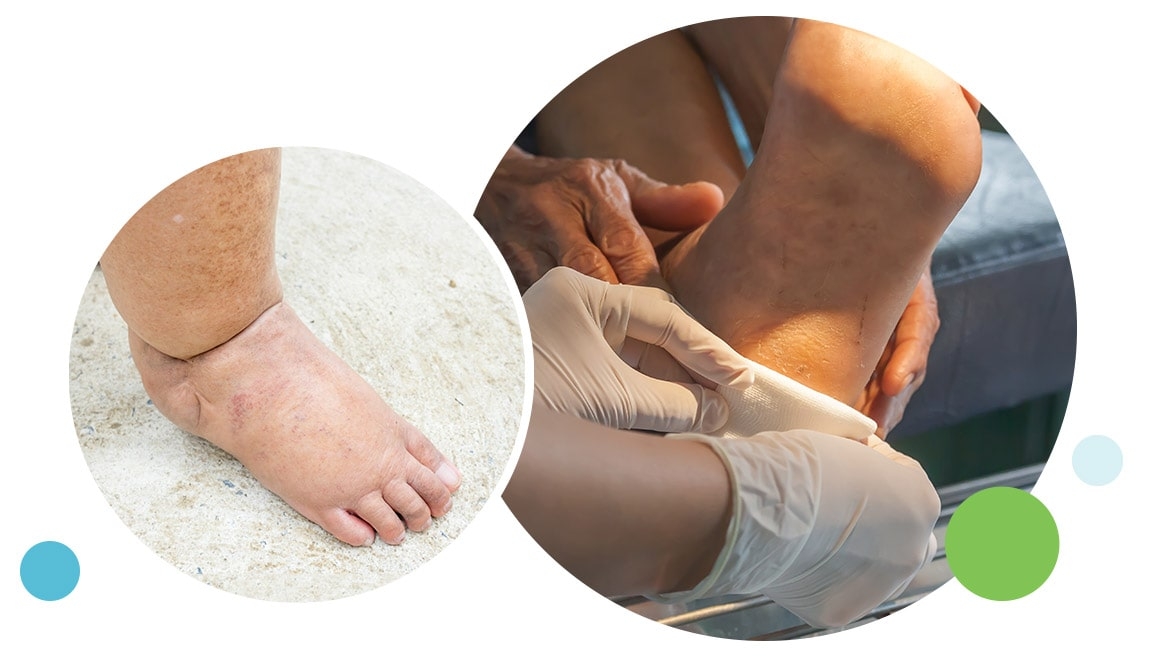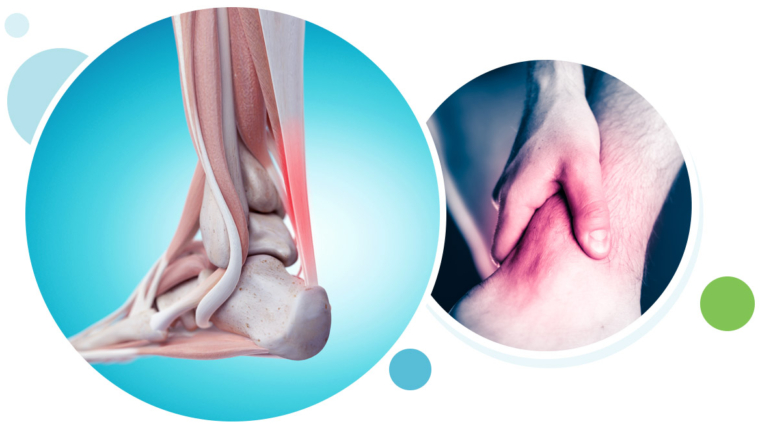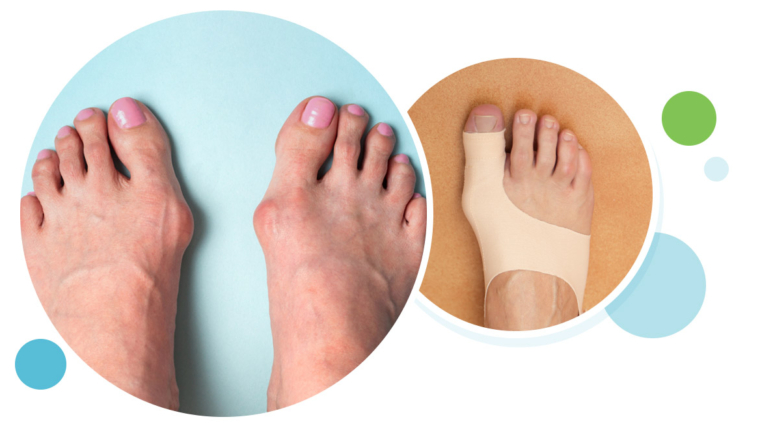At Northstate Foot & Ankle Specialists, we pride ourselves on providing the most complete professional treatment for every type of foot condition. Our practice includes comprehensive foot & ankle care for one of the most common diseases that affects feet, diabetes. The symptoms of diabetes, treatment methods for diabetic foot conditions and podiatric self-care recommendations are often misunderstood.
We are here to help you get a better understanding of the impact that diabetes can have on your feet with this Podiatrist’s Guide to Diabetic Foot Care. If you are in need of medical attention immediately contact your primary care physician. If you need foot care contact a podiatrist with a special focus in diabetic foot care. Read on to learn more about this disease and its effect on feet, as well as the best methods of diabetic foot care at home.
WHAT IS DIABETES?
Diabetes is a chronic disease that occurs when the body does not properly process food for use as energy. Most of the food we eat is turned into glucose, a form of sugar, for our bodies to use for energy. The pancreas, an organ that lies near the stomach, makes a hormone called insulin to help glucose get into the cells of our bodies. When you have diabetes, your body either doesn’t make enough insulin or can’t effectively use its own insulin as well as it should. This causes sugars to build up in your blood and leads to a condition known as hyperglycemia.
Over the long-term, high glucose levels are associated with damage to the body and failure of various organs and tissues. Diabetes can cause serious health complications including heart disease, blindness, kidney failure, foot pain and lower-extremity amputations. Sadly, this disease is the seventh leading cause of death in the United States.
WHAT ARE THE SYMPTOMS OF DIABETES?
Below are some of the most common symptoms of diabetes according to the Center for Disease Control (CDC). It is important to note that a person with a diabetic condition might experience only some, or even none, of these issues. If your body has developed one or more of these symptoms, we strongly advise you to visit a physician for a professional diagnosis right away. Every case of diabetes is serious.
Most Common Symptoms of Diabetes
- Frequent urination
- Excessive thirst
- Unexplained weight loss
- Extreme hunger
- Sudden vision changes
- Tingling or numbness in hands or feet
- Feeling very tired much of the time
- Very dry skin
- Sores that are slow to heal
- More infections than usual
HOW DOES DIABETES AFFECT FEET?
High glucose levels in the blood from diabetes can lead to several serious health issues developing with the feet. Ranging from nerve damage to infections to deformities, these foot problems should be treated promptly under the care of a trained podiatrist.
One of the common foot complications from diabetes is diabetic neuropathy, a type of nerve damage. Occurring often in the arms, hands, legs and feet, this condition can lead to painful tingling, sensations of extreme temperature, loss of strength and tone, and affect involuntary functions such as sweating. Diabetic neuropathy usually develops slowly and worsens over time.
The loss of sensation and other problems associated with nerve damage make a patient prone to developing skin ulcers (open sores) that can become infected and may not heal. This serious complication of diabetes can lead to loss of a foot, a leg, or even a life. Below are more of the most common ways diabetes affects feet.
Skin and bone infections from ulcerations. Nerve and blood vessel damage, combined with immune system problems, make infections more likely. Even a small cut or wound can lead to a serious infection with diabetes. Infections can usually be treated with antibiotics, although severe cases may require treatment in a hospital.
Abscess. Infections can sometimes eat into bones or tissue and create a pocket of pus called an abscess. The most common treatment is to drain the abscess. Treatment may also require removal of some bone or tissue, however newer methods like oxygen therapy are less invasive.
Gangrene. Diabetes affects the blood vessels that supply fresh blood and oxygen to your fingers and toes. When blood flow is cut off, tissue can die. When this process of tissue decay begins, a condition called gangrene can develop. Treatment is usually oxygen therapy or surgery may become necessary to remove the affected area.
Deformities. Nerve damage can weaken the muscles in your feet and lead to problems like hammertoes, claw feet, prominent metatarsal heads (ends of the bones below your toes), and pes cavus, a high arch that won’t flatten when you put weight on it.
Charcot foot. Diabetes can weaken the bones in your foot so much that they break. Nerve damage can lessen sensation and prevent you from realizing that something is wrong. In this scenario, you might continue walking on broken bones without even knowing it and your foot will change shape over time. Charcot foot may look like your arch has collapsed into a rocker shape.
Amputation. Problems with blood flow and nerves make it more likely for people with diabetes to injure their feet and not realize it until an infection sets in. When an infection can’t be healed and a significant abscess develops, or if low blood flow leads to gangrene, amputation may be the only remaining effective treatment.

SIGNS OF DIABETIC FOOT PROBLEMS
As noted above, there are many different foot problems that can develop with diabetes due to the nature of the disease and its systemic effects. When it comes to the foot and ankle, it is especially important to constantly be monitoring for signs of diabetic progression.
- Changes in skin color
- Changes in skin temperature
- Swelling in the foot or ankle
- Pain in the legs
- Open sores on the feet that are slow to heal or are draining
- Ingrown toenails or toenails infected with fungus
- Corns or calluses
- Dry cracks in the skin, especially around the heel
- Foot odor that is unusual or won’t go away
Nausea, vomiting, or stomach pains may accompany some of these symptoms in an abrupt onset of insulin-dependent diabetes, now called Type 1 diabetes. If you are experiencing any of these foot conditions, we recommend contacting a podiatrist as soon as possible.
A PODIATRIST’S RECOMMENDATIONS FOR DIABETIC FOOT CARE
Diabetes can be very dangerous to your feet and overall health. Even a small cut can have serious risks and consequences. Diabetes may cause nerve damage that takes away the feeling in your feet. This chronic disease may also reduce blood flow to the feet, making it harder to heal an injury or resist infection. Because of these problems, you may not notice a foreign object in your shoe. As a result you could develop a blister or a sore. This could lead to an infection or a nonhealing wound that could put you at risk for an amputation.
To avoid serious foot problems that could result in losing a toe, foot or leg, our podiatrists recommend the following:
Take care of your diabetes. Keep your blood sugar levels under control and follow the recommendations of your physician.
Get periodic foot exams. Seeing your podiatrist on a regular basis can help prevent the foot complications of diabetes.
Inspect your feet daily. Check for cuts, blisters, redness, swelling or nail problems. Use a magnifying hand mirror to look at the bottom of your feet. Call your doctor if you notice anything.
Bathe your feet in lukewarm, never hot, water. Keep your feet clean by washing them daily. Use only lukewarm water—the temperature you would use on a newborn baby.
Be gentle when bathing your feet. Wash them using a soft washcloth or sponge. Dry by blotting or patting, and carefully dry between the toes.
Moisturize your feet, but not between your toes. Use a moisturizer daily to keep dry skin from itching or cracking. But DO NOT moisturize between the toes, as this could encourage a fungal infection.
Cut toe nails carefully. Cut them straight across and file the edges. Don’t cut nails too short, as this could lead to ingrown toenails.
Never treat corns or calluses yourself. No “bathroom surgery” or medicated pads. Visit your doctor for appropriate treatment.
Wear clean, dry socks. Change them daily.
Consider socks made specifically for patients with diabetes. These socks have extra cushioning, do not have elastic tops, are higher than the ankle and are made from fibers that wick moisture away from the skin.
Wear socks to bed. If your feet get cold at night, wear socks. NEVER use a heating pad or a hot water bottle.
Shake out your shoes and feel around the inside before wearing. Remember, your feet may not be able to feel a pebble or other foreign object, so always inspect your shoes before putting them on.
Keep your feet warm and dry. Don’t let your feet get wet in snow or rain. Wear warm socks and shoes in winter.
Consider using an antiperspirant on the soles of your feet. This is helpful if you have excessive sweating of the feet.
Never walk barefoot. Not even at home! Always wear shoes or slippers. You could step on something and get a scratch or cut.
Don’t smoke. Smoking restricts blood flow in your feet.
HOW WE CAN NORTHSTATE FOOT & ANKLE SPECIALISTS HELP WITH DIABETIC FOOT CARE?
A primary goal of any foot and ankle surgeon is to prevent amputation at all costs, until the risk becomes too high to the rest of your body and no other treatment options remain viable. There are many new surgical techniques available to save feet and legs, including joint reconstruction and wound healing technologies. Getting regular foot checkups and seeking immediate help when you notice any issues with your feet can keep small problems from worsening. Your podiatrist will work together with other experienced health care providers to prevent and treat foot-related complications from diabetes.
Services we offer at Northstate to assist with your diabetic foot care include:
- ABI/TBI vascular testing
- Wound care
- MRI for possible complications
- Physical therapy with gait training assistance
- Diabetic shoe gear fitting and dispensing
- Routine care and education
- Smart-LEDA
- Charcot reconstruction
- Amputation
NORTHSTATE’S PODIATRISTS ARE DIABETIC FOOT CARE EXPERTS
If you are experiencing a diabetic foot condition, or think you have developed one or more of the common symptoms of diabetes, please come see one of the doctors at Northstate Foot and Ankle Specialists to help diagnose and receive the best treatment for your feet. Time is of the essence for treating foot issues related to diabetes and our team is always here to help you.




